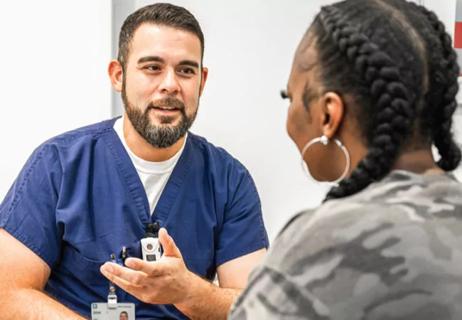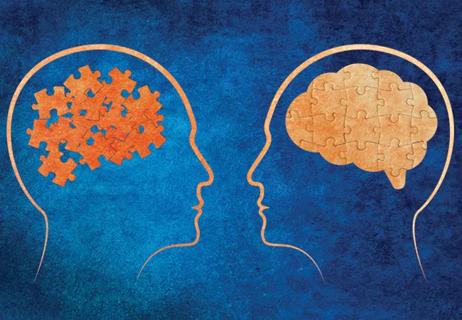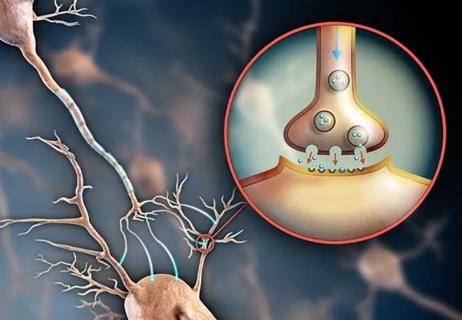Teens express fears and seek support but are less likely than adults to feel helpless

The largest analysis of online discussions of epilepsy ever conducted — comprising 220,000 posts in the U.S. — shows that teenagers with epilepsy are avidly searching for emotional support and information on their condition. In addition, adults with epilepsy are much more likely to express feelings of helplessness — to the point of giving up — than their adolescent counterparts. These and other highlights from the analysis were presented in August at the World Congress of Psychiatry 2019. (Editor’s note: The study was published in full in Epilepsia on May 8, 2020.)
Cleveland Clinic is a non-profit academic medical center. Advertising on our site helps support our mission. We do not endorse non-Cleveland Clinic products or services. Policy
“The internet appears to provide a much-needed outlet for people coping with epilepsy,” says lead investigator Tatiana Falcone, MD, a psychiatrist with Cleveland Clinic’s Center for Behavioral Health and Epilepsy Center. “Insights from large-scale analysis of digital conversations can help physicians better understand their patients’ mindsets and steer epilepsy societies to focus their resources on relevant topics and communication venues.”
The researchers used Culturintel, a big-data analytics firm, to mine spontaneous conversations about epilepsy and suicide. Data were collected in an anonymized manner across various websites with U.S.-based IP addresses, including topical sites (such as Medscape), message boards (such as forums sponsored by the Epilepsy Foundation), social networks and blogs. The search was limited to the one-year period between September 2017 and September 2018.
After comprehensive data collection, natural language processing and text analytics were used to examine the data, employing repeated human-assisted training and review of the program output. Key research questions included how mentions of suicide in online discussions of epilepsy broke down by age (teens vs. adults), which specific topics around suicide surfaced in these discussions, sentiments expressed about suicide, and the psychographic mindset of those mentioning suicide.
Of the 220,000 online conversations about epilepsy identified, 41,000 were posted by teenagers and 181,000 by adults.
Leading findings around the main research questions included the following:
Dr. Falcone was shocked by the volume of data collected in the study. “The huge number of posts reveals how great a need there is for information and support,” she says.
She notes that while she has studied adolescents with epilepsy for the past 10 years, this analysis gives “a uniquely informative glimpse into the minds of patients.” She says it was distressing, but not surprising, to see how prevalent a theme social isolation was, noting that feeling different and being bullied at school were often-mentioned concerns among teens.
Dr. Falcone believes the small percentage of posts related to suicide (8% among teens and 3% among adults) belies the magnitude of the problem. In fact, she says, studies reveal that suicide accounts for nearly one-third of deaths among patients with epilepsy. (See this recent discussion with Dr. Falcone on epilepsy and suicide.)
She was heartened to see from the data that adolescents frequently search topical websites, such as Medscape and the Epilepsy Foundation’s site, to obtain hard content on their condition rather than engaging only on social media sites. “The Internet is often the first place that teens go for support — and for information,” she says.
Dr. Falcone says she’s found that it can be hard for adolescents to participate in treatment studies for emotional support around epilepsy. Over the years she has tried different venues to engage teens with epilepsy, such as organizing discussions at community centers, libraries and Cleveland Clinic’s epilepsy unit, but none bring in as many people as online webinars and support groups. This has led her to increasingly pursue telemedicine activities and web-based patient-physician communication, for which she was recently awarded grant funding.
“I frequently see parents of teens with epilepsy wanting to shield their children from knowing ‘too much’ about their condition for fear of upsetting them,” she adds. “But our data show that adolescents are searching for information, so it is incumbent on physicians to give them the personalized and specific guidance they need.”
The trends revealed by patients coping with this chronic disease over a lifetime were also important, she adds. Fear of physical impairment, thoughts of suicide, and feelings of helplessness and having given up were all expressed more often by adults than by teens in the analysis. “This points to the need to address epilepsy by searching relentlessly for successful treatment and by taking time to counsel patients on their emotional concerns,” Dr. Falcone concludes.

Consultation service provides comprehensive care to patients with anxiety, PTSD, schizophrenia, and other high-risk disorders

Study shows a growing openness to the clinical potential of psychedelic treatments

Urine test strips and point-of-care testing may be key to slowing opioid epidemic

Study sheds light on how clinicians addressed their patients’ pain and insomnia during the pandemic

Recovery's in Reach provides treatment options, peer support to those struggling with alcohol and drug use

Experts recommend task-focused strategy for monitoring treatment

Finding changes the treatment landscape of psychiatric illness

Patients benefit when doctors disclose with care